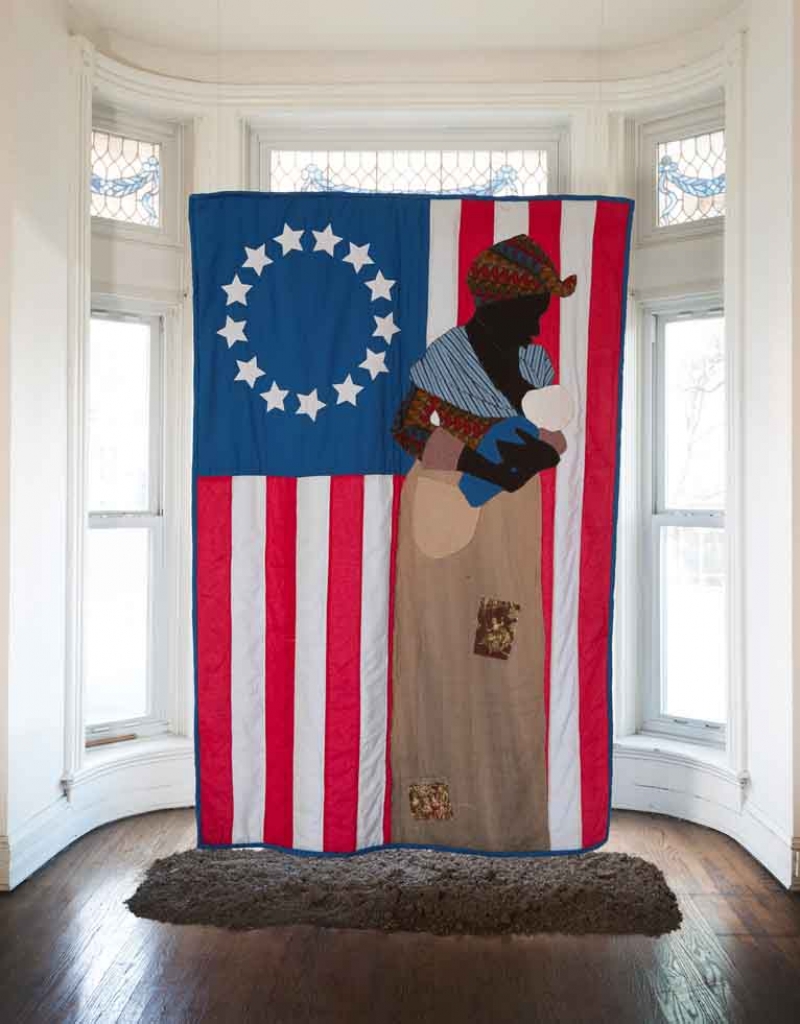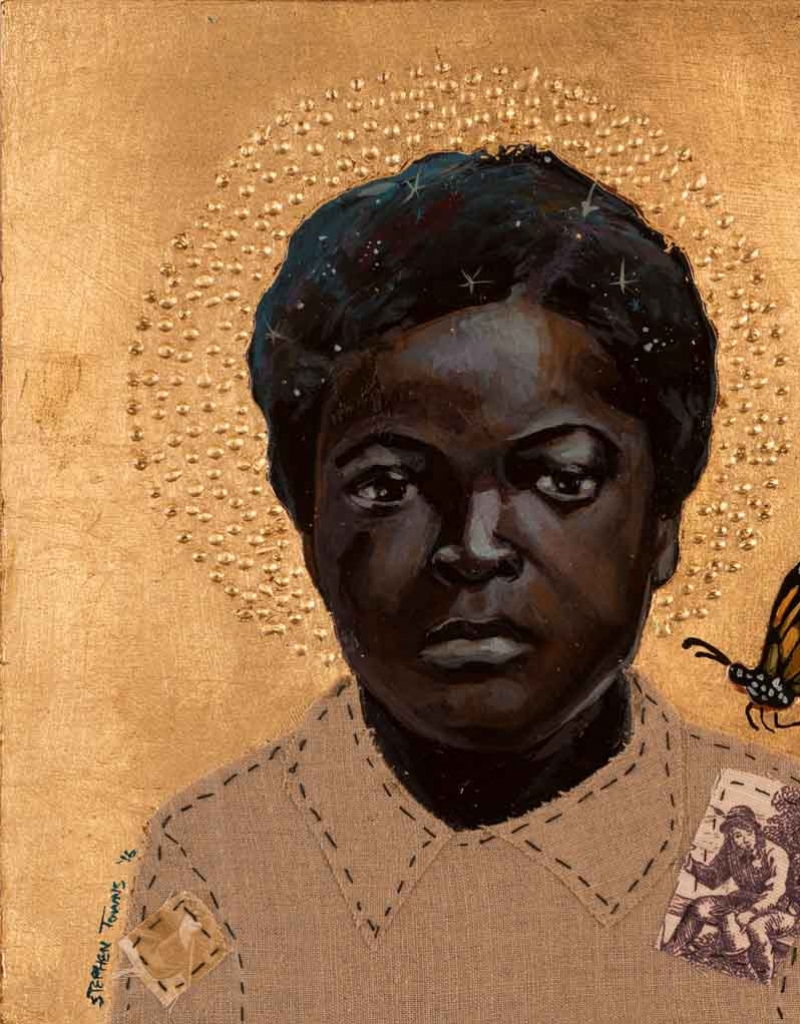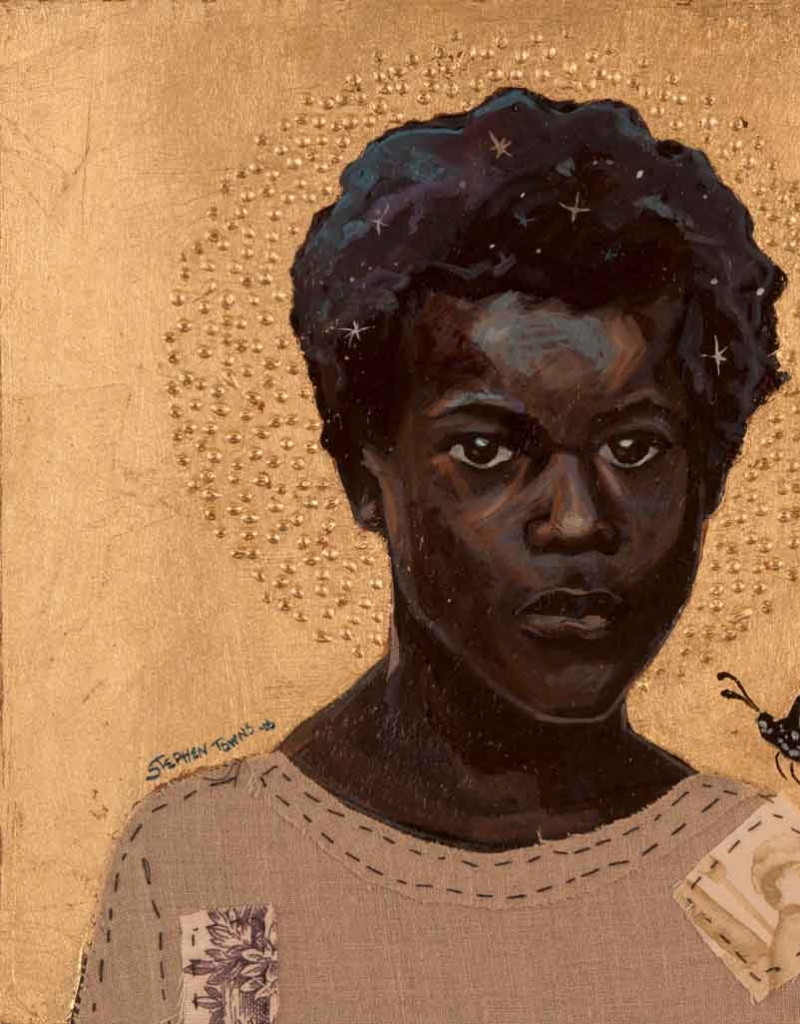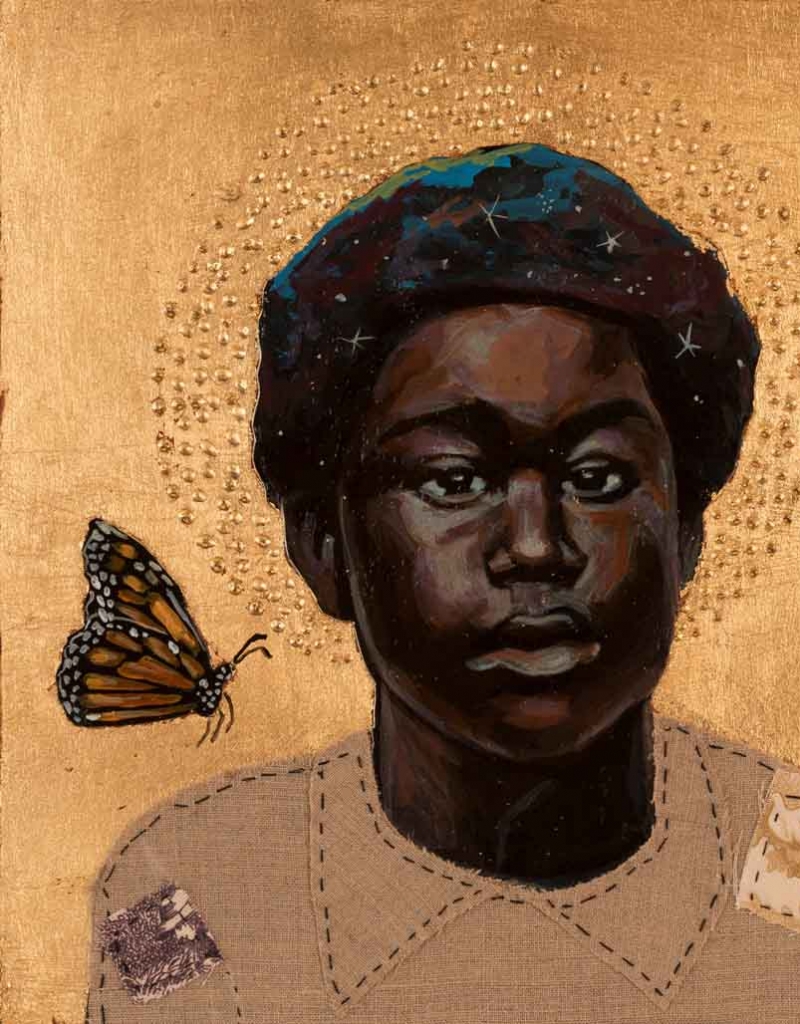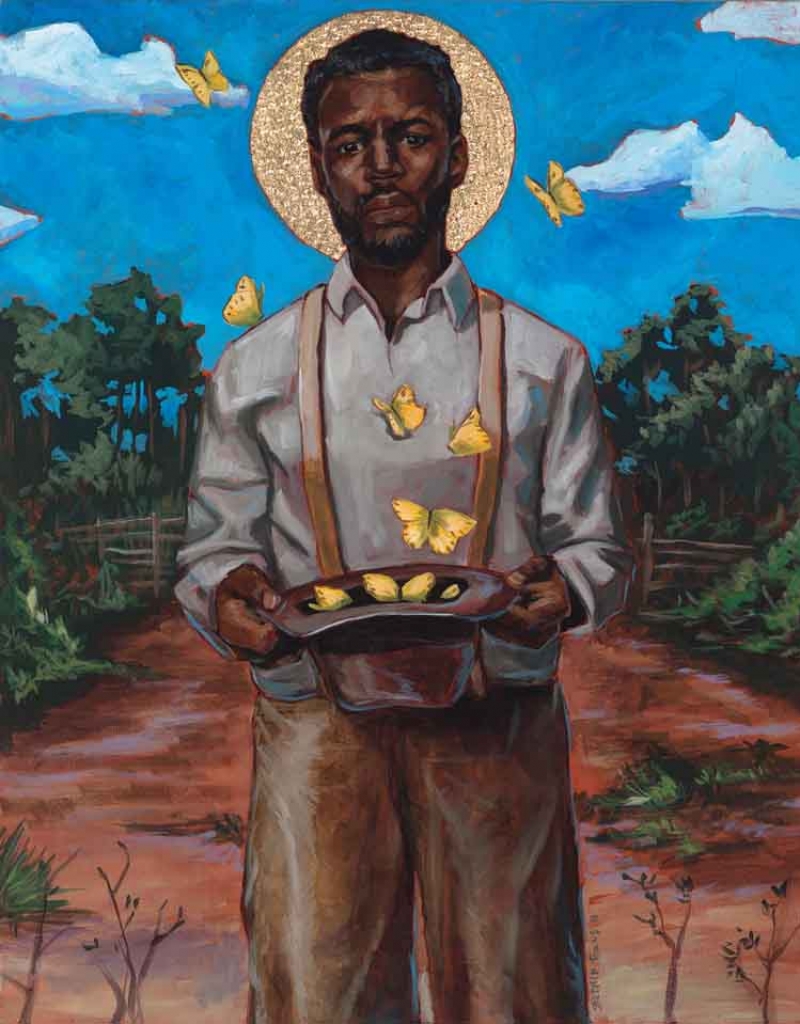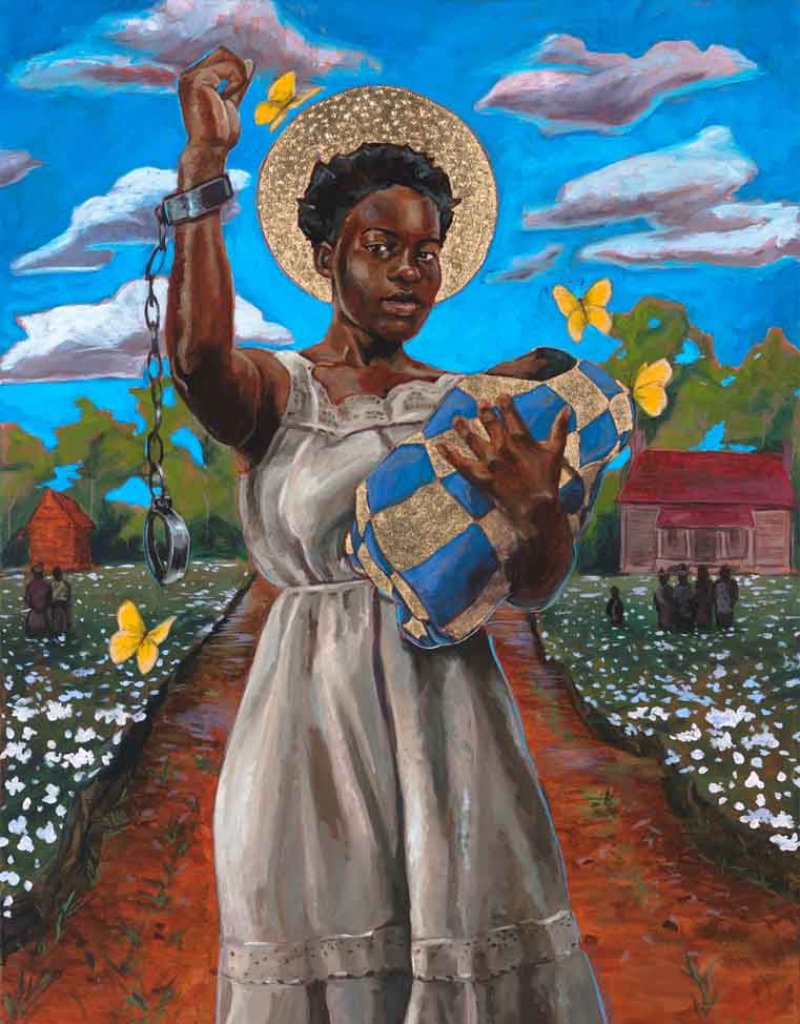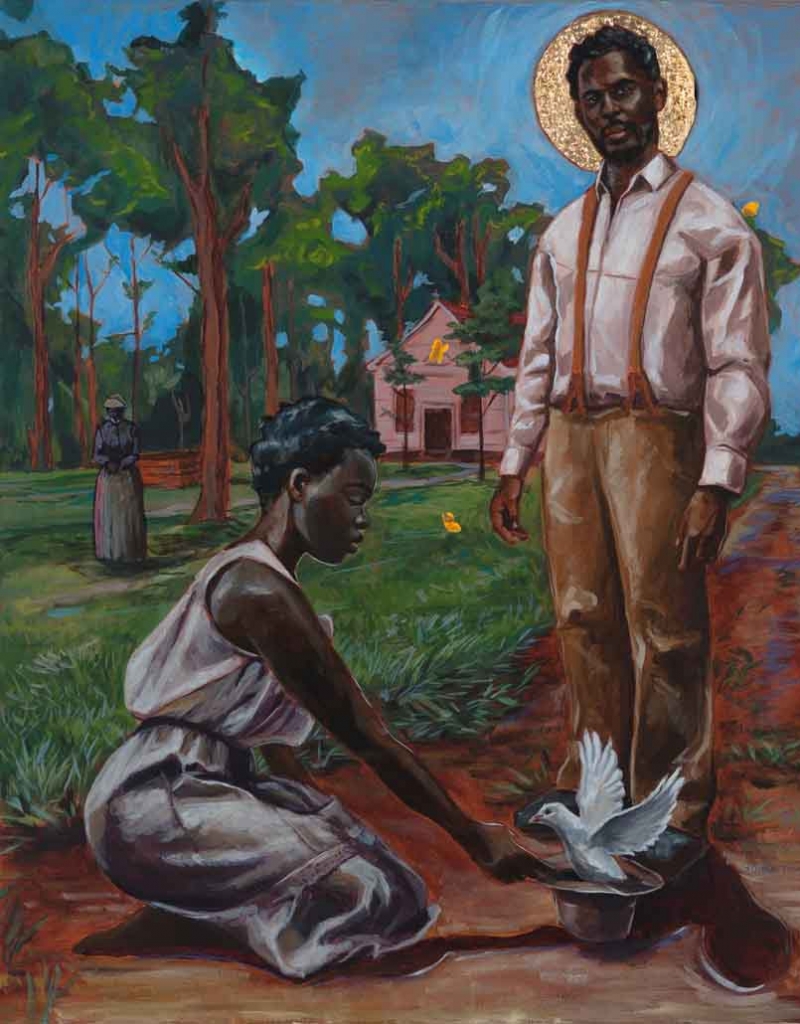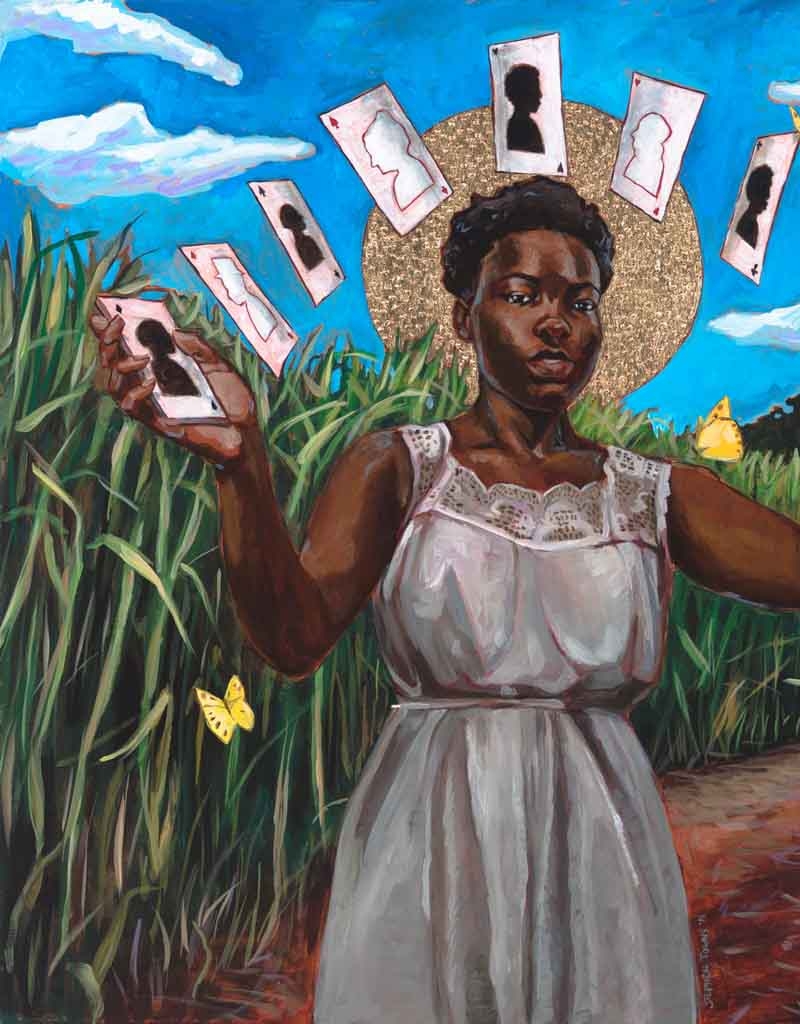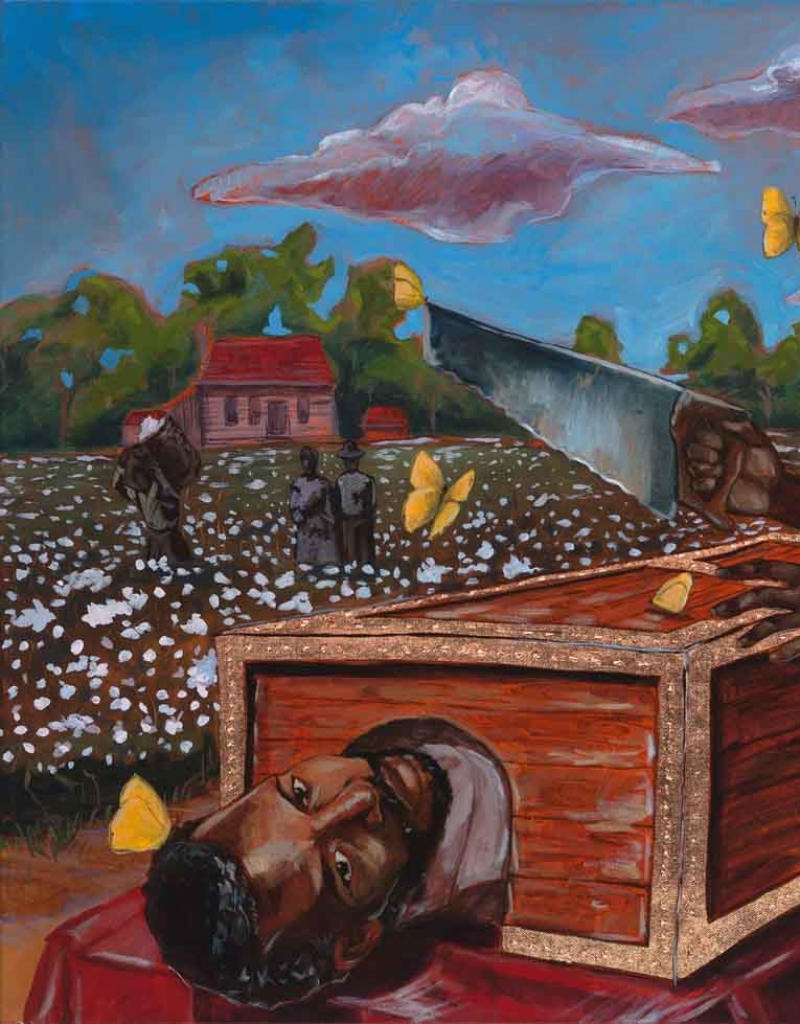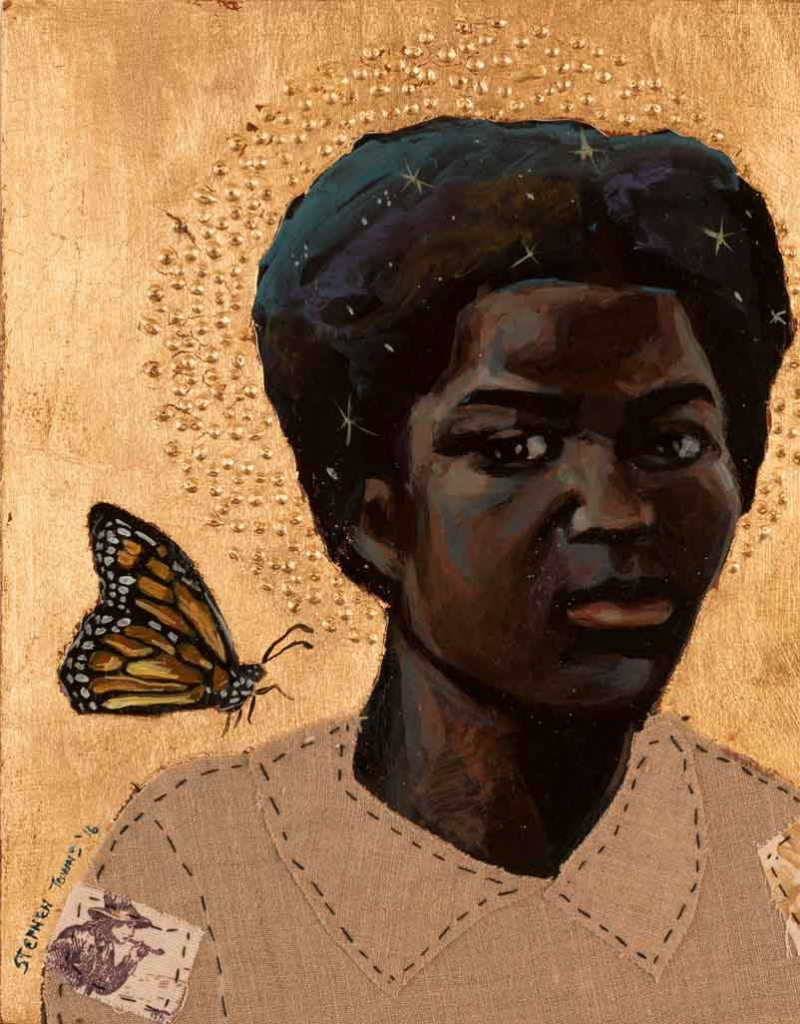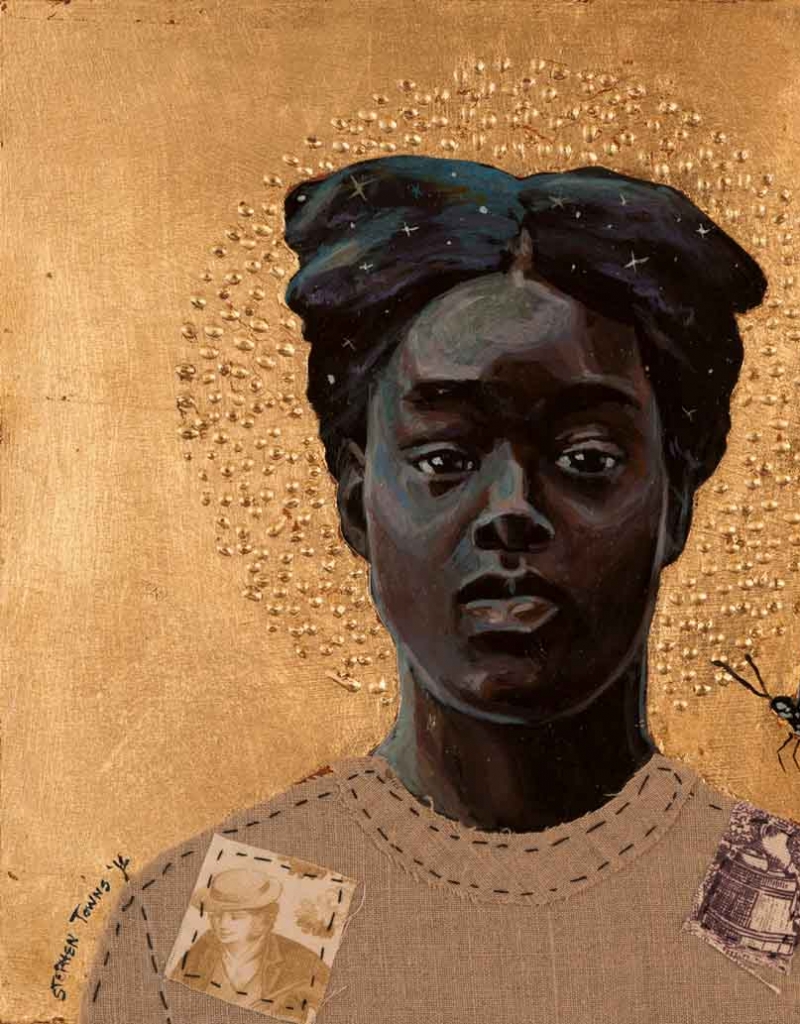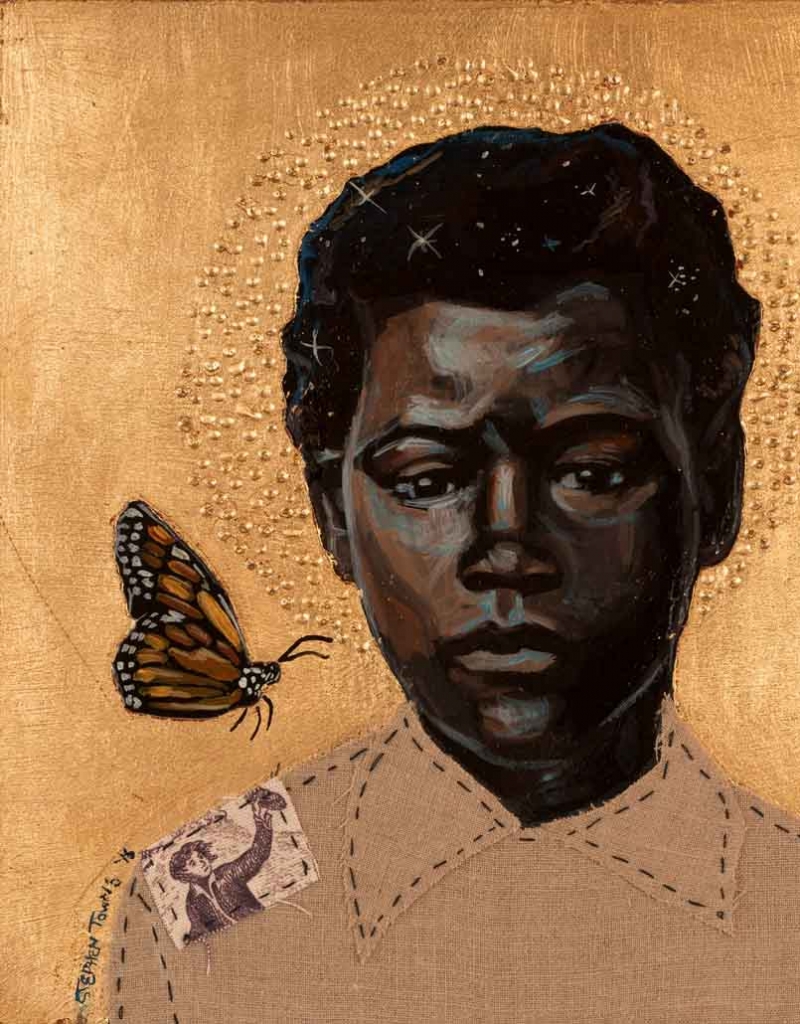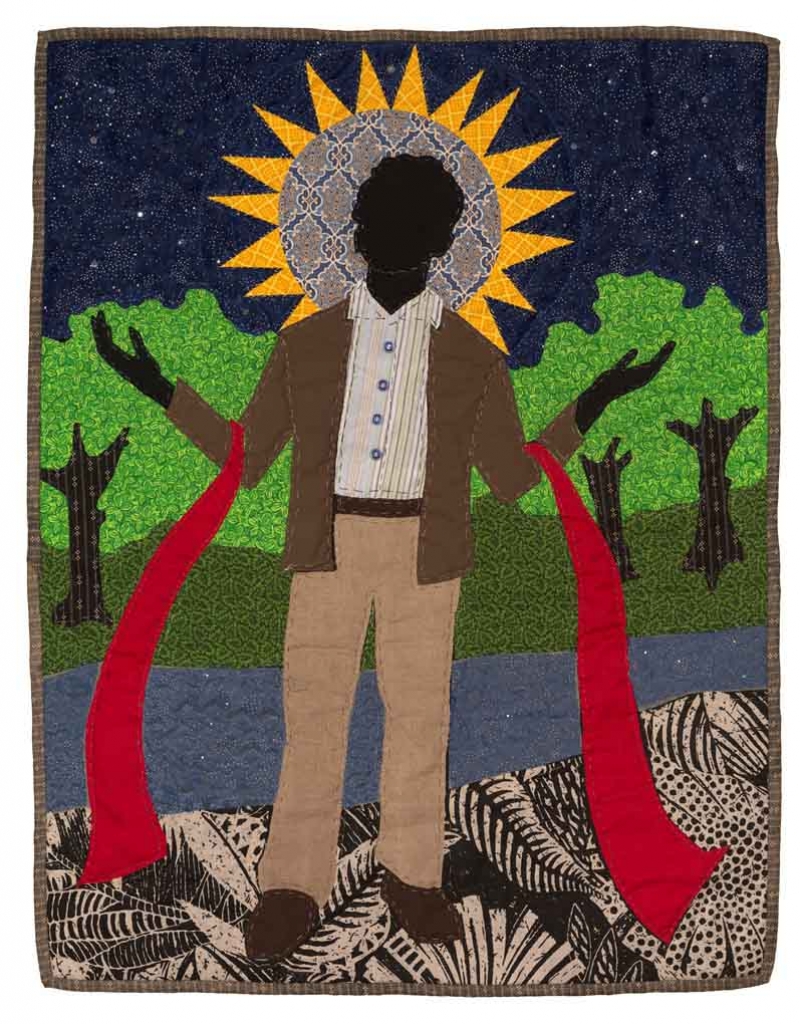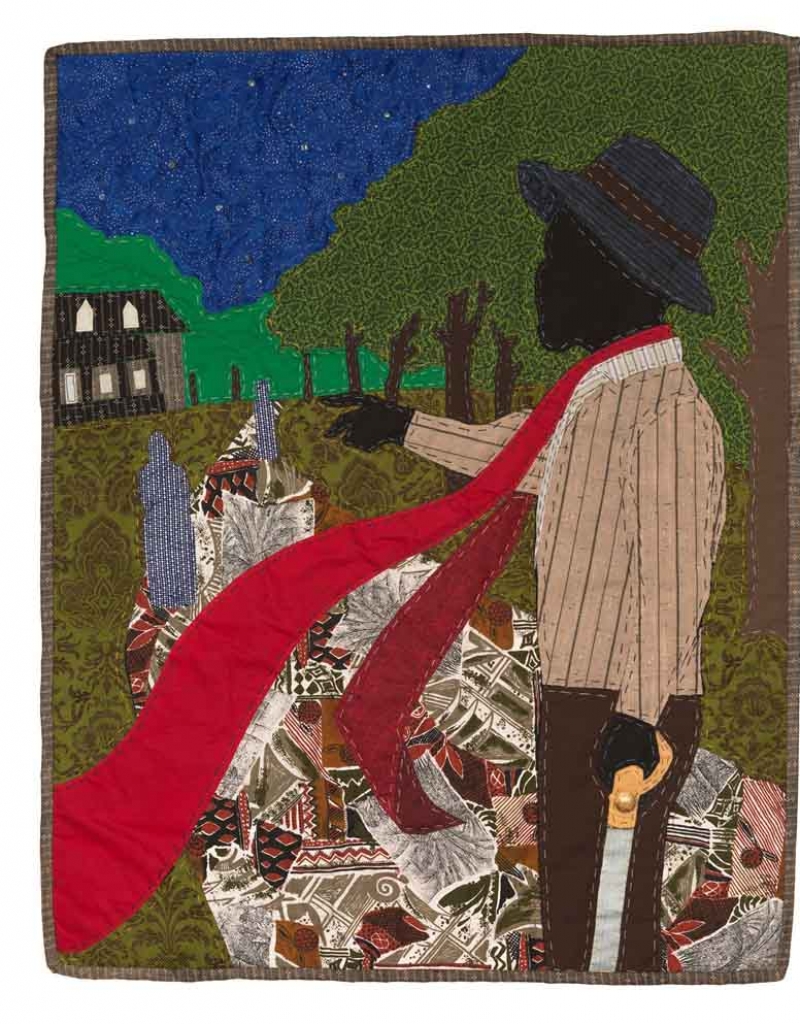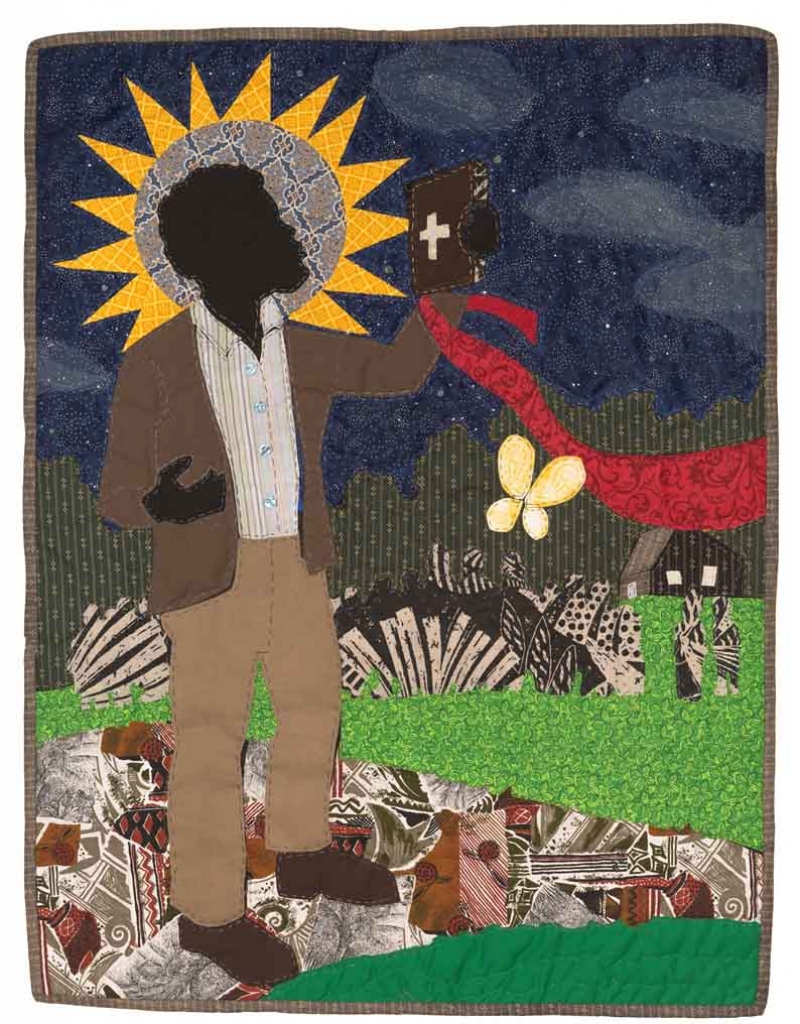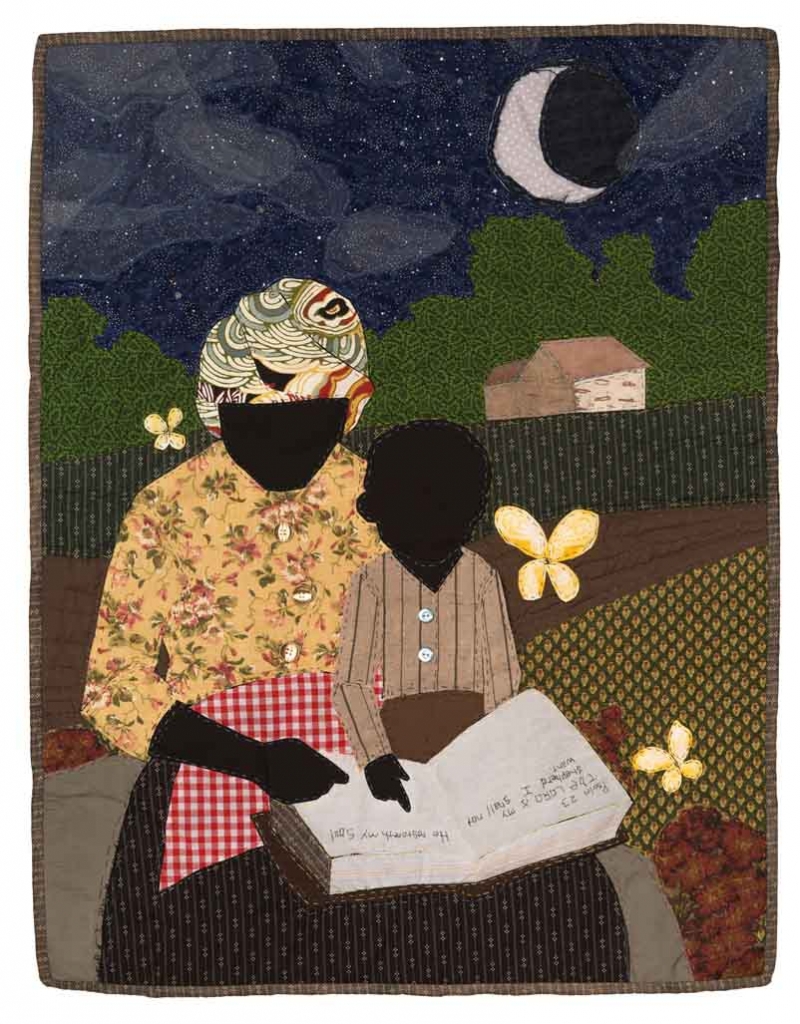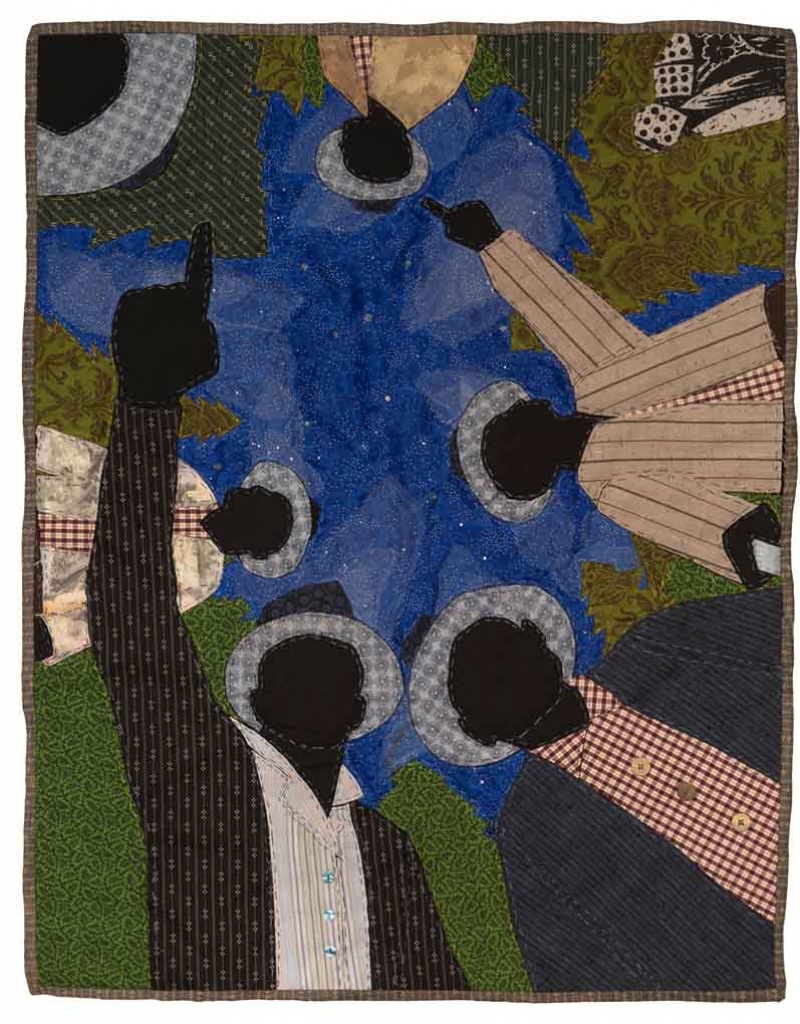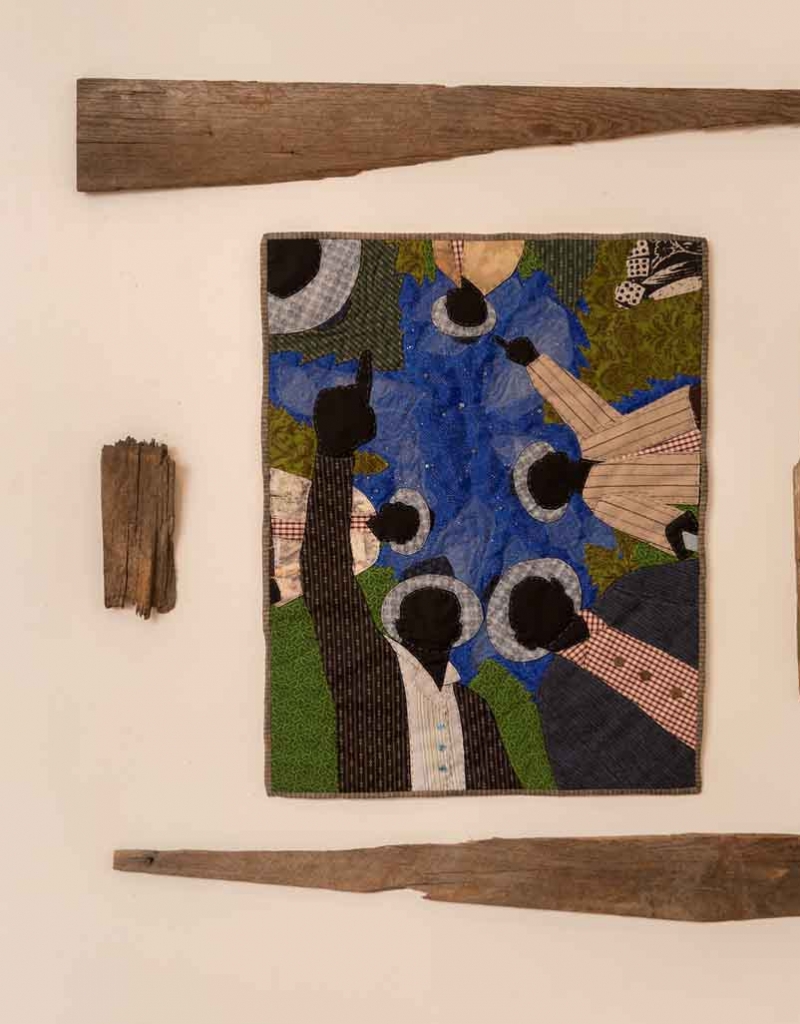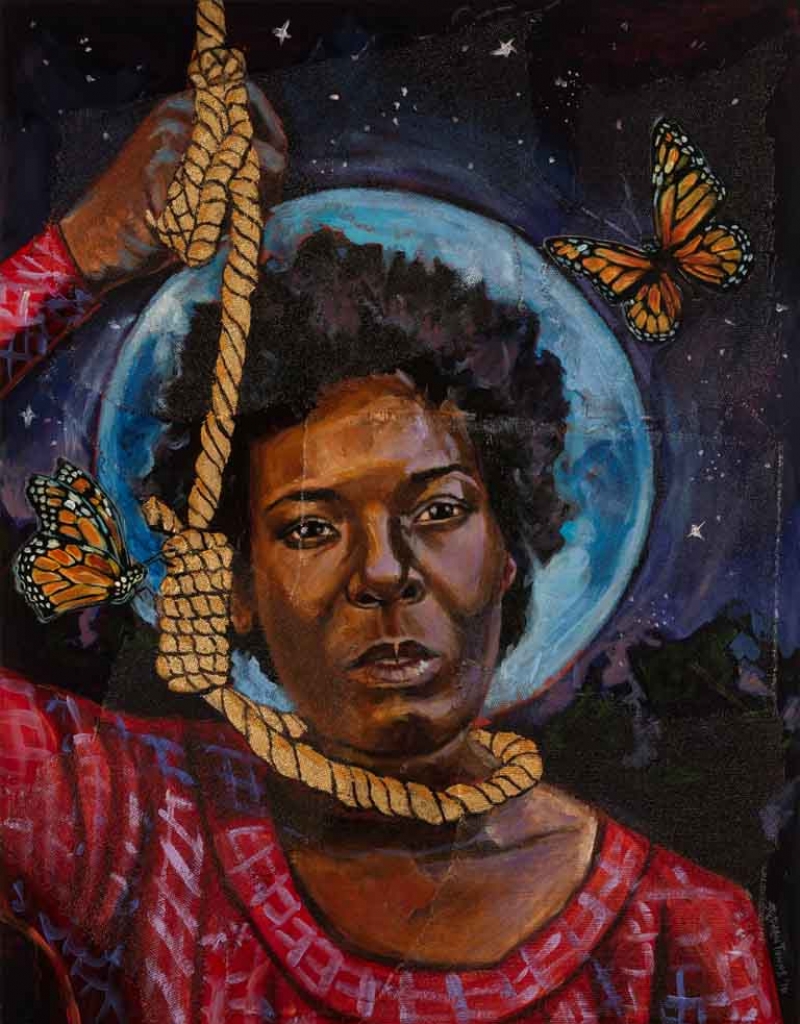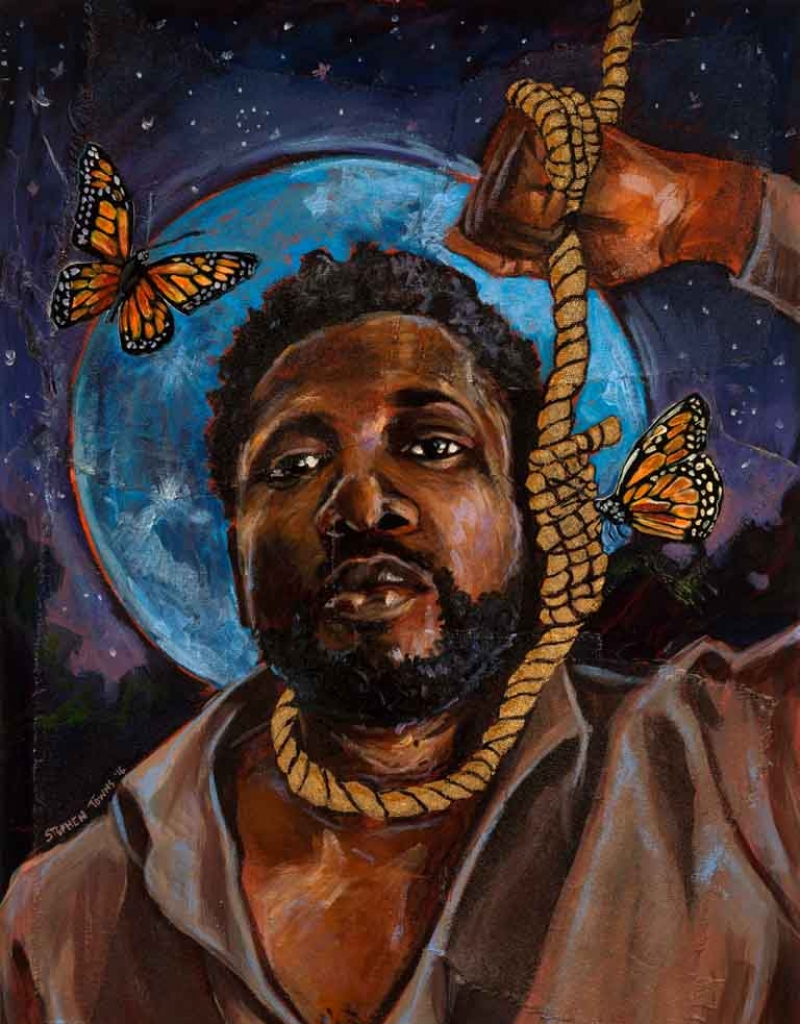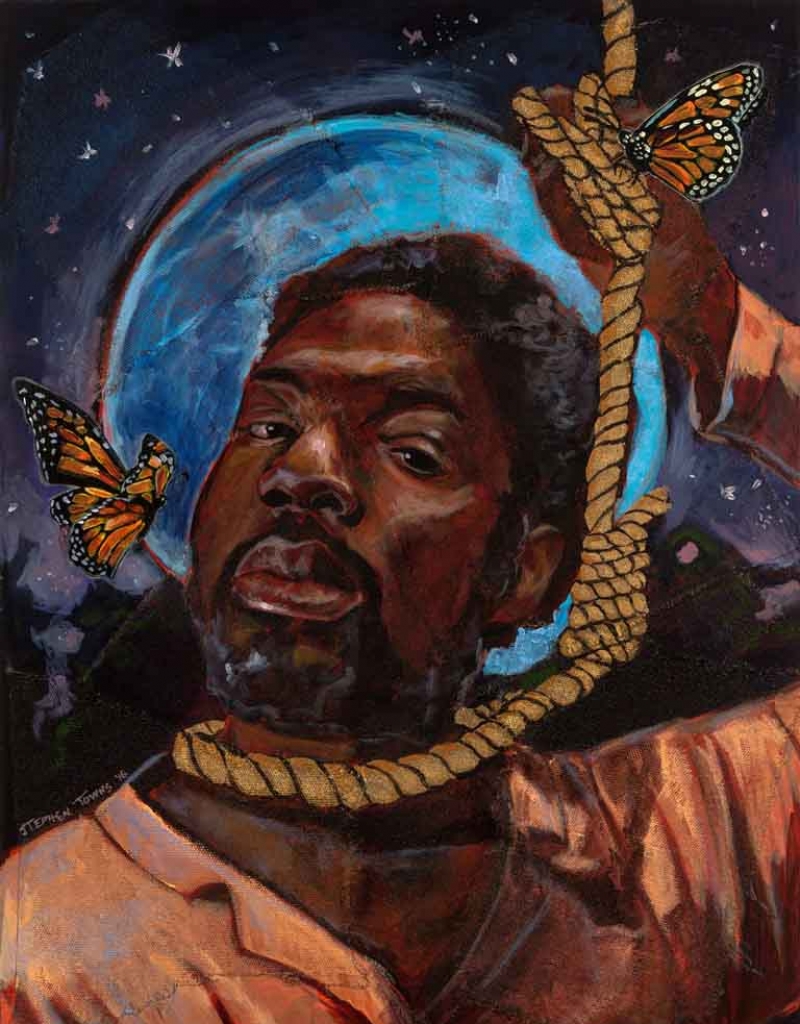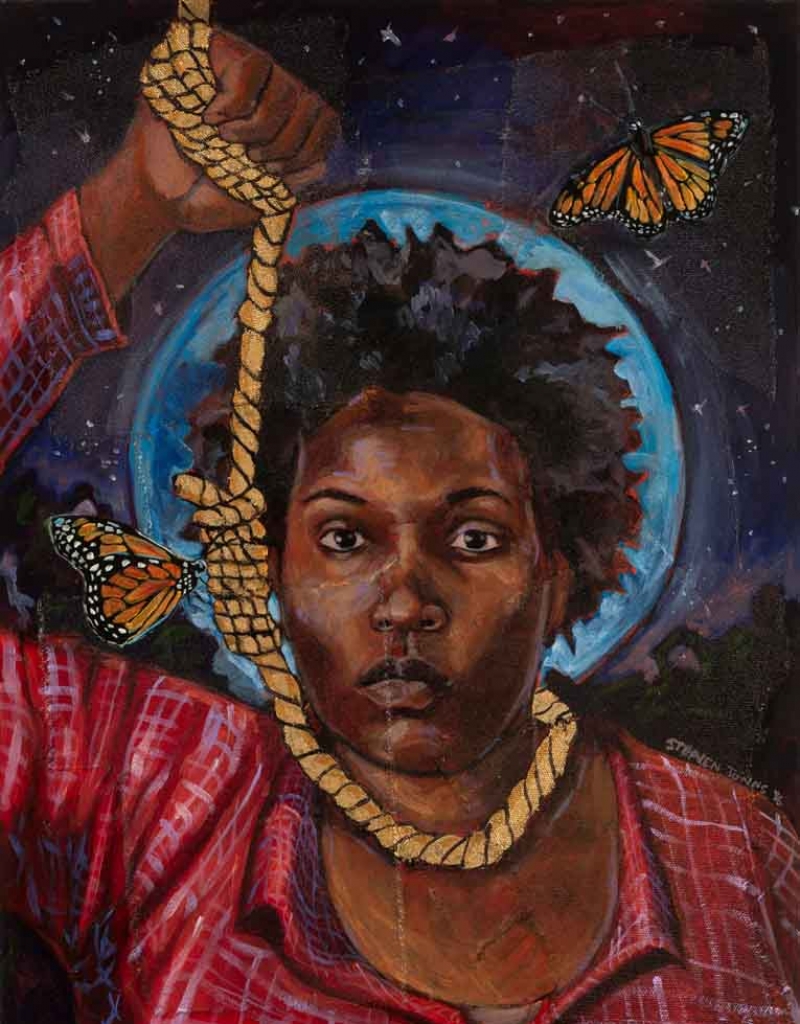
Shall It Declare Thy Truth? (detail), 2016
Take Me Away to the Stars: The Mystery, Magic, and Myth of Nat Turner
November 5, 2016 – February 18, 2017
artwork | artist’s talk | artist statement | curatorial statement
Take Me Away to the Stars, explores how violence is processed through escapism, religion and myth. Using the historic and mythological chronicles of Nat Turner’s historic slave rebellion, Stephen Towns constructs a contemporary story through drawings, paintings and quilts. read artist statement
Artwork
Artist Statement
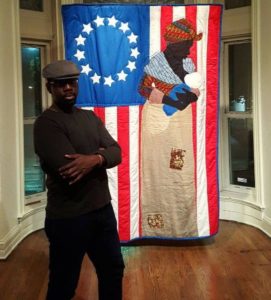
‘The Confessions of Nat Turner,’ scholarly articles on coping mechanisms and a visit to the Turner Rebellion sites, are the thesis for Take Me Away to the Stars. This research is the foundation to construct a contemporary story using patterns, shape, celestial imagery and quilting unfolding this very violent story through non-violent imagery without “escape” from reality.
Take Me Away to the Stars is a complement to my co-patriot series. Stars provides me an avenue to process all I have learned about the violence of American history and may possibly provide a framework on how to navigate and articulate the current anger and frustration that exists within Baltimore today following the Uprising of 2015 and indeed throughout the nation and the world.
Curatorial Statement
On the eve of August 21, 1831, Nat Turner led a rebellion against slavery in South Hampton County, Virginia. He was joined by a band of 70 armed slaves and freed blacks who traveled to an estimated 15 farms and bludgeoned every white man, woman, and child to be found. By the end of the 24-hour insurrection, 55-65 whites had been murdered. Out of retaliation for the attack, Turner and 21 of his conspirators were executed by hanging, others were transported from the region, and an estimated 200 innocent blacks were summarily killed.
Turner’s bloody revolt sent shock waves throughout the antebellum south. He was vilified by slaveholders who believed his act to be reprehensible; while being raised to apotheosis status by abolitionists in the north for sacrificing his life to end slavery.
Whether villain or hero, the question remains—given the cult of violence that existed during slavery was Turner justified in taking up arms against his oppressors?
In, Take Me Away to the Stars: The Mystery, Magic, and Myth of Nat Turner Stephen Towns explores the moral legitimacy and political efficacy of violent protest by blacks in their fight for freedom and equality. Turner’s life is the lens through which Towns examines how violence is processed through escapism and myth while investigating the role religion has played in the subjugation and liberation of black people.
Historical and mythological narratives and Towns’ imagination are the inspirations for paintings and quilts that take us on a visual journey from Turner’s childhood to the day of his execution. Towns masterfully constructs his commentary on violence employing a non-violent iconography where butterflies, celestial skies, halos, and magic acts, are metaphors for resilience, spirituality, perseverance, and escapism.
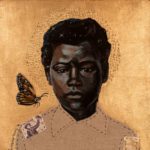
The story unfolds with Find Me a Constellation, a series of delicately painted portraits of enslaved children, offered by Towns as a tender reminder of those born as chattel. As a child, Turner impressed family and friends with an unusual sense of divine purpose. Town’s portrait, I will Fear No Evil imagines Turner as a small boy; the title, a reference to his deep religious convictions.

The Story Quilts chronicle Turner’s evolution from “special” child to the man driven by prophetic visions to lead the insurrection. Towns’ narrative quilts depict the enigmatic Turner under luminous night skies as he evolves from gifted child—to charismatic preacher—to the infamous leader of the slave revolt.
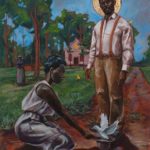
to Come
In the Black Magic series, magic is the metaphor for religion and survival. Towns’ paintings depict Turner and his wife, Cherry as magicians who deploy sorcery to escape the harsh realities of their existence. They are fueled by the quest for freedom and imbued with the power of God, as they find sanctuary in a world of illusions.
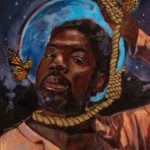
Joy Cometh in the Morning is Towns’ homage to Turner and his combatants, who in the facing their execution, remain defiant. Paintings of the insurgents evoke intense emotions. Their penetrating gazes and clinched fists convey a resolute determination to live freely or dead by their own hands.
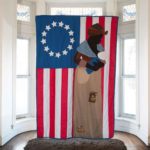
In Birth of a Nation, Towns takes a departure from the Turner story to address the role of black women as “wet nurses” during the antebellum and post-antebellum period. A 13 star Revolutionary Flag meticulously hand stitched by Towns hangs above a soil, just inches from desecration. The flag serves as the backdrop for the archetype mammie figure with white baby suckling at her breast. Towns reveals the contradiction in men who hold the flag sacred while defiling and violating the black woman’s body.
Myrtis Bedolla, Curator
Reference: French, Scott. The Rebellious Slave: Nat Turner in American Memory. New York, NY. Houghton Mifflin Company. 2004
